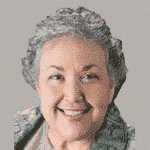The following are quoted verbatim from Junior Showmanship – Conformation Junior Showmanship Regulations, Guidelines for Judging Juniors in Conformation, Juniors in Performance Event Regulations, Amended to September 2020, Published by The American Kennel Club. (Underline emphasis is the author’s.)
Recently, I had the pleasure of judging some outstanding children in Junior Showmanship. I also had the discontent of seeing some poor ring presentation. How are we, the collective dog show body, preparing the next generations to properly present purebred dogs for Conformation adjudication?
Junior Showmanship is an avenue for which we are enabled to provide in-ring guidance, or commendation, during their efforts.
Junior Showmanship Judging Guidelines
Section 1. Definition and Purpose
Junior Showmanship classes are non-regular classes, which are judged solely on the ability and skill of Juniors in handling their dogs as in the Breed ring. The purpose of Junior Showmanship competition is twofold: to introduce and encourage Juniors to participate in the sport of dogs; and to provide Juniors with a meaningful competition in which they can learn, practice, and improve in all areas of handling skill and sportsmanship. It is important that judges of Junior Showmanship competition understand the definition and purpose of these classes and take seriously their role in guiding the future guardians of the sport. JUDGES ARE EXPECTED TO HAVE A GENUINE INTEREST IN JUNIORS AND IN JUNIOR SHOWMANSHIP COMPETITION.”
Junior Showmanship is an avenue for which we are enabled to provide in-ring guidance, or commendation, during their efforts.
Section 4. Responsibilities of the Junior Showmanship Judge
…As a judge of Juniors at an all-breed event, it is essential to be familiar with the appropriate presentation for every breed…”
Having been in the dog show world for a little over 47 years, as an owner-exhibitor, breeder, and judge, I think I’ve gained a bit of knowledge on how and why the different breeds should be presented.
Many were, and continue to be, the ringside chats with experienced breeder-exhibitors about the nuances of their breeds and their presentation. Many were, and are, the great handlers, amateur owner-handlers, and professionals whom I’ve watched properly present their charges to discerning adjudicators, and many were the hours spent with these same individuals observing, and sometimes helping, them to prepare and/or groom these same dogs for competition.
Along the way, I took bits and pieces that I incorporated into the training, grooming, and exhibition of my own Basset Hounds and Salukis, as well as those I taught in handling classes. To say that my experience as a Junior exhibitor in horse show arenas was also valuable would be an understatement.
What I have seen over these 47 years is a short-cutting by some in the presentation of their breed(s). This often appears as the untrained or improperly trained dog (and exhibitor) in the ring. This manifests in many ways.
Some examples include the dog that is constantly fed bait while it is in the stack, or on the table, ramp, or floor; the dog that gaits at constantly varying speeds, whether on the down and back or go-round; the dog that is constantly looking at the handler’s right hand in search of bait, thus throwing off its balance while gaiting; the exhibitor who constantly squeaks a toy to gain a dog’s attention long after the dog has displayed its lack of interest (and the dogs in front of and in back of it have turned to see what’s going on); and lastly, the exhibitor who shows himself/herself with excessive gestures or moves that are made to gain the arbiter’s attention.
Where are these exhibitors getting their instruction? Is it from someone else who does the same? Are they imitating the worst they have seen in the Breed ring because they think that that’s the correct presentation for a dog, or for their breed?
Section 6. Judging Routine
…Judges should limit conversation with Juniors during competition to that which is absolutely necessary…”
Section 8. Judge’s Examination and Evaluation
The judge should examine and evaluate the class of Juniors in four basic areas: proper breed presentation, skill in the individual dog’s presentation, knowledge of ring procedures, and appearance and conduct. The general rule in evaluating a handler’s capabilities is ECONOMY OF MOTION. Handlers who use exaggerated motions and gestures in any phase of their presentation of the dog should be faulted. In essence, the judge should hardly be aware of the capable handler’s presence while completing the dog’s examination. In many respects a Junior Showmanship judge’s principal consideration should be to find those Juniors who possess a “hand for dogs.” Those handlers having this attribute neither over- nor under-handle their dogs. They present their dogs in a quiet, efficient manner. They are able to keep their dog’s attention without dramatic or unnatural movements…”









